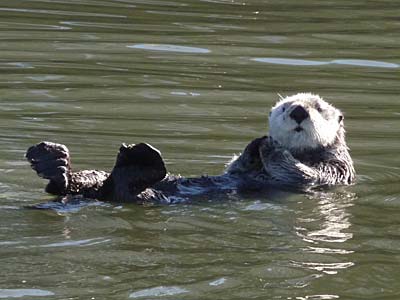
Sea Otter
Enhydra lutris
OK, it does seem strange that a land bird like me is so focused on sea creatures, but you have to admit that my friend Enhydra is charming. Enhydra's story makes me grin, because their California population has grown from a tiny enclave of 50 animals subsisting near Big Sur 1938, to a relatively healthy population of around 2,000 today. Oh face it, that cute face would make me grin even without an inspirational story!
Sea otters seem to spend most of their time on their backs. They do dive to find food, but they surface and float on their backs to eat their catch. They use rocks or shell fragments as tools to pry their prey open. They may go on land, but they don't have to. They even sleep floating on their backs like this.
Why Would Anyone Hunt Someone This Adorable???
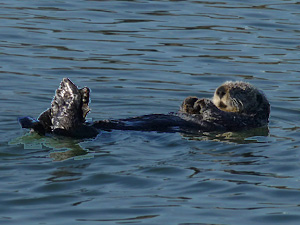
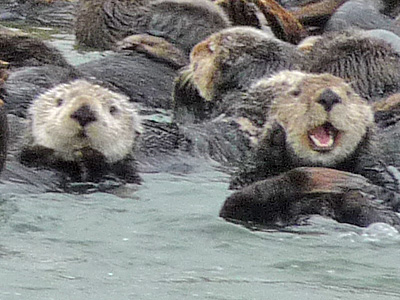
Enhydra was hunted nearly to the point of extinction, partly because they are so cute. They don't just look soft and cuddly. They ARE soft and cuddly. They are mammals who spend their lives in the ocean, so they need some pretty serious warmth. Their dense, luxurious fur does the job. It works to keep them warm, but regrettably, it attracted human attention in the 18th and 19th century. They were hunted ruthlessly for their fur. Fortunately, the humans came to their senses, and began protecting them.
The BAD NEWS: You've heard this song before: Enhydra dropped to such low numbers at the beginning of the 20th century, that they have a very limited gene pool. This means they are particularly vulnerable to disease or major environmental changes. This is one of the reasons they are still listed as endangered.
They're Cute, but they have Enemies
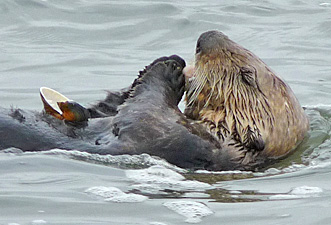
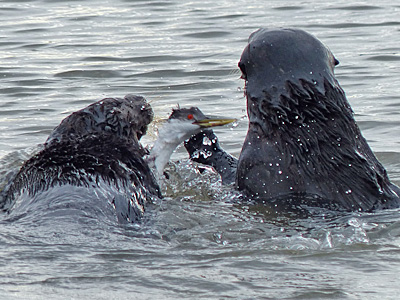
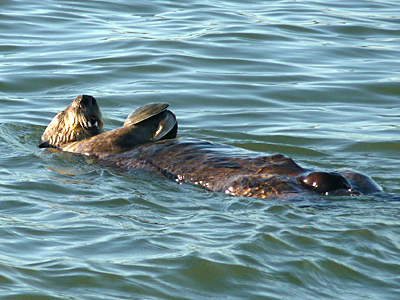
Although sea otters are no longer hunted for their fur, not everyone loves them. Although they do occasionally dine on birds, like the unfortunate Western Grebe shown above, they primarily eat shellfish. This means they compete with fishermen for prized prey like abalone. They also inhabit waters that are used by the U.S. military for training exercises.
They're Cute, but Sea Otters Should Hang with Other Otters!

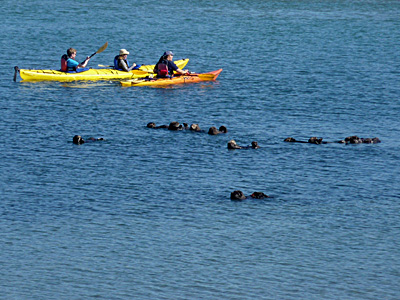
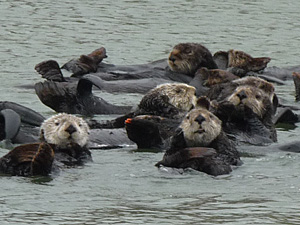
Occasionally otters get into situations where they become accustomed to humans. This leads to behavior that is unhealthy for the otters. The otter on the left was one who approached humans and animals on the beach. This was thrilling for the humans, but it didn't work out for the otter, who was eventually shot by a less friendly human. The kayakers above are approaching a raft of otters in Elkhorn Slough. While the otters don't seem particularly concerned, humans should give them plenty of space. They are easier to disrupt than you might think!
Want to Learn More?